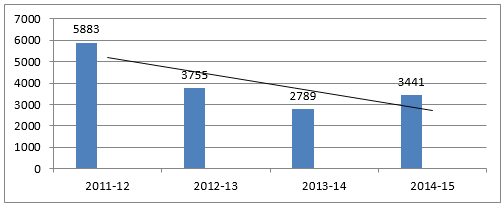Marc Norcross from Oregon State University recently led a research team to examine how many head basketball and soccer coaches in Oregon were using an injury prevention routine within their programs (“Factors influencing high school coaches’ adoption of injury prevention programs“).
They discovered that only about one-fifth were using such a program and that only about half of these were using the program exactly as designed. Their findings, published online in the Journal of Science and Medicine in Sport, concluded that injury prevention programs were not being widely used in these Oregon high schools. Specifically, the authors suggested that more comprehensive coach education was needed to address the shortcomings of why coaches are not embracing designed injury prevention programs (IPP).

Knowing that we have used a professionally designed injury prevention program in the Greenville South Carolina County Schools (Click here to see this program in detail) for four years, the Oregon State study fascinated me because we experienced the very same issues in getting all of our coaches to embrace our IPP. The Oregon State study found that coaches did not feel professionally-designed injury prevention programs fitted into their normal coaching practices, nor did they see how the programs were any better than what they were already doing as part of a warm-up routine. The Oregon authors reported that coaches felt these specialized injury prevention exercises were not compatible with their needs and the actual IPP routine too difficult or complex for use in their coaching environment.
The objective of this article is to highlight the problems and issues of getting coaches to embrace scientifically designed injury prevention routine and to share some of the strategies we have used in Greenville County to overcome the very same obstacles expressed in the Oregon State study.
In December 2011, I described in a pelinks4u article, “An Injury Prevention Initiative Based Upon the Functional Movement Screen (FMS).” The objective of this 2011 article was to share with readers a specific injury prevention routine for athletic teams that was developed by sports medicine professionals and based upon the highly successful and scientifically based Functional Movement Screen.
Five years ago, the Greenville County Schools in conjunction with the Greenville Health System that provides our schools with certified athletic trainers initiated the injury prevention program I described. After one year, there were significant positive results to the point that we decided to make the program mandatory for all middle and high school teams. We have just finished our fourth year and the results are nothing short of amazing.
Within our school district we have 19 middle and 14 high schools all with full athletic programs. Our certified trainers record all injuries that require treatments to our 10,000+ athletic participants. We have seen upwards of a 50% drop in injuries/treatments over the past four years and can only point to the IPP as the only significant change in what we have done over these four years. The chart below shows the dramatic drop in injuries since we have made the IPP mandatory in all of our sports programs:
Our injury prevention initiative consists of eleven exercises that take about 10 to 15 minutes to complete. Much as in the Oregon State study, we had many coaches resist instituting this warm-up routine into their programs. The exercises were a significant change in what the coaches were used to doing. Football coaches and coaches in other sports where warm-ups consist of actual ball drills used within their sports were especially difficult to change. The IPP routine moved the coaches out of their comfort zone. However, once we made it mandatory and followed up with annual instructions and demonstrations along with the sharing of results, we began to make some inroads into the mindset of our coaches.
At our pre-season fall coaches meeting this past May, we showed our coaches the above chart. It was a persuasive visual. Although we have seen a spike in the number of injuries this past year, we are confident that our trend is clearly downward.
In discussing our results with our sports medicine team (The Greenville Health System, Steadman Hawkins Orthopedics, Proaxis Therapy, and Acceleration Sports Institute), we feel that our positive results are the direct result of consistently applying the strategies below:
1. Use a scientifically based, sound exercise routine.
As pointed out in the December 2011, pelinks4u article, this program is based upon the Functional Movement Screen (FMS) and the rehabilitative exercises that are proven to raise FMS scores. The exercises are designed to fire the muscles used in full body athletics, strengthen core, and improve balance, stability and body control. More importantly, sports medicine professionals and physical therapists, not coaches, developed these exercises.
An effective IPP should include dynamic stretching, core strengthening, balance and body control exercises. Traditional warm-ups have just included stretching (static, dynamic, and ballistic). To be effective, an IPP should include exercises in all four of these areas.
2. Consistency over time, spaced repetition of the IPP.
We have been doing this IPP program for five years with the program being mandated the last four throughout the district in all athletic programs. Keeping in mind that all levels of teams from middle school to junior varsity to varsity perform these exercises means that we have athletes who have been performing the same set of exercises over a four to five year period. This is a huge change!
3. Continuous professional development.
As in the Oregon State study we frequently saw that our coaches were not using the IPP exactly as designed. In every one of our mandatory pre-season coaches’ meetings we now emphasize that the IPP is mandatory, review each exercise and share the positive injury-reduction results. We also strongly encourage the use of these exercises in all off-season and pre-season strength and conditioning programs. An annual in-service is essential to keep coaches focused on the details of each exercise and to educate new coaches coming into our programs. It is noteworthy to point out that all of our certified trainers are schooled each year on how to instruct each of the exercises in the IPP.
4. Oversight and supervision.
For an IPP to succeed, the school athletic director must be fully sold on it and be the instructional leader with all of his or her coaches in initiating the program. The AD must be the driver of the IPP and push the program with vigor. Should you have a certified trainer on your staff, this person should be the lead teacher and monitor of the IPP. Many coaches and athletic administrators may think the trainer’s main role is to treat injuries. It is our belief that the certified trainer’s primary and most important role is to first do what he or she can to prevent injuries. For this reason, the certified trainer should be the person who insures that any injury prevention routine is initiated and taught by the coaches in every sport and executed correctly by all athletes.
In honesty, we too experienced and continue to see pushback from our coaches. Most coaches I know coach the way they were coached and do the very same warm-up routines they did as athletes. Furthermore, their mindset of a warm-up routine does not include the emphasis that is necessary in initiating a successful IPP. The five strategies above are critical in selling coaches and athletes on an IPP that the coaches themselves did not design and that might be perceived as being forced upon them.
In summary, I encourage you to adhere to the following steps:
- Make sure that your IPP is based upon scientifically proven routines
- Have all of your athletes and teams use the IPP at the earliest level and up through varsity level teams.
- Provide your athletic directors, coaches and certified trainers continuous professional development to insure consistency over time.
- Closely monitor your coaches to ensure details are adhered to in every sport and at every level.
The thought has occurred to me many times that these proven injury prevention exercises should also be a staple for physical education programs. I have repeatedly suggested to our district’s physical education instructional leader that these exercises should be included in their PE programs: Something I’d encourage those of you who teach physical education to consider!
The old adage, “An ounce of prevention is worth a pound of cure,” is what an injury prevention routine is all about. The school athletic director and trainer have a direct and vested interest in finding an injury prevention routine that is scientifically based and proven to reduce injuries, and making sure each coach initiates the program with due diligence to all of their athletes.

